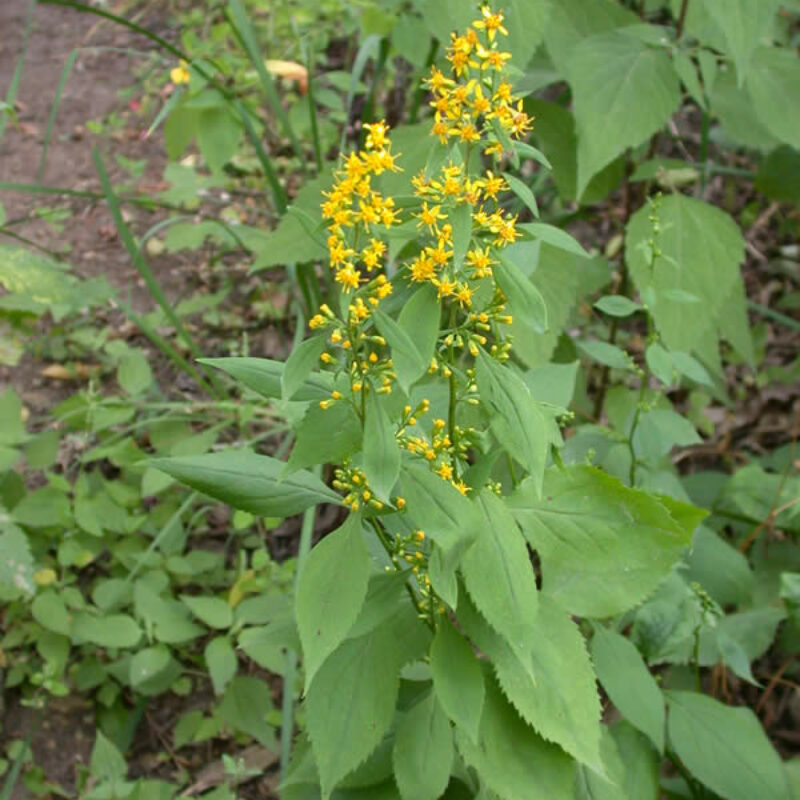Zig Zag GoldenrodSolidago flexicaulis
Zig Zag Goldenrod gets its name from the way that its stems 'zig zag' from leaf to leaf. These leaves are bluntly toothed all along the stem with the middle leaves usually the largest at 6 inches long and 4 inches wide. The small flowers appear from late summer to early fall in a cluster near the top of the plant. Zig Zag Goldenrod can be aggressive and therefore may not be suitable for small woodland gardens.
USDA symbol: SOFL2
General Information
| Plant Type | Forb |
|---|---|
| Height | 3 feet |
| Light Exposure | Part Sun, Shade |
| Soil Moisture | Dry, Medium |
| Bloom Color | Yellow |

Tolerances
| Flooding / Inundation Tolerance | Low |
|---|---|
| General Resilience | 8 |
| Salt Tolerance | Low |
| Stress Tolerance | Drought Tolerant, Fire Tolerant, General Disturbance |
Pollinator Value: Very High
| Bloom Months | August to October |
|---|---|
| Larval Host of | Bees, Moths |
| Specific Pollinators Hosted | Cucullia convexipennis, Dichomeris bilbella, Gnorimoschema gallaeasterella, Numerous bee species |
| Pollinator Benefit | Insect Pollinated, Provides Nectar, Stem Nesting, Supports Generalists |
Project Planning
| Project Type | Rain Garden, Restoration, Sandy or Engineered Soils, Shoreline Buffer, Upland Buffer |
|---|---|
| Coefficient of Conservatism | 7 |
| Herbivore Sensitivity | Low |
| Lifespan | Perennial |
| Rate of Spread | Medium |
| Soil Stabilization | Shallow |
| Vegetative Reproduction | Clonal |
Range
| County | Aitkin, Anoka, Becker, Big Stone, Brown, Carlton, Carver, Cass, Chippewa, Chisago, Clay, Clearwater, Cottonwood, Crow Wing, Dakota, Dodge, Douglas, Faribault, Fillmore, Freeborn, Goodhue, Hennepin, Houston, Itasca, Jackson, Kandiyohi, Lake, Le Sueur, Lincoln, Lyon, Mahnomen, Martin, Meeker, Mille Lacs, Morrison, Mower, Murray, Nicollet, Norman, Olmsted, Otter Tail, Pine, Polk, Pope, Ramsey, Redwood, Renville, Rice, Sibley, St. Louis, Stearns, Steele, Swift, Todd, Traverse, Wabasha, Wadena, Waseca, Washington, Wilkin, Winona, Wright |
|---|---|
| Ecoregion | Driftless Area, Lake Agassiz Plain, North Central Hardwood Forests, Northern Glaciated Plains, Northern Lakes and Forests, Northern Minnesota Wetlands, Western Cornbelt Plains |
| Approximate Eco Province | Eastern Broadleaf Forest, Laurentian Mixed Forest, Prairie Parkland, Tallgrass Aspen Parklands |
